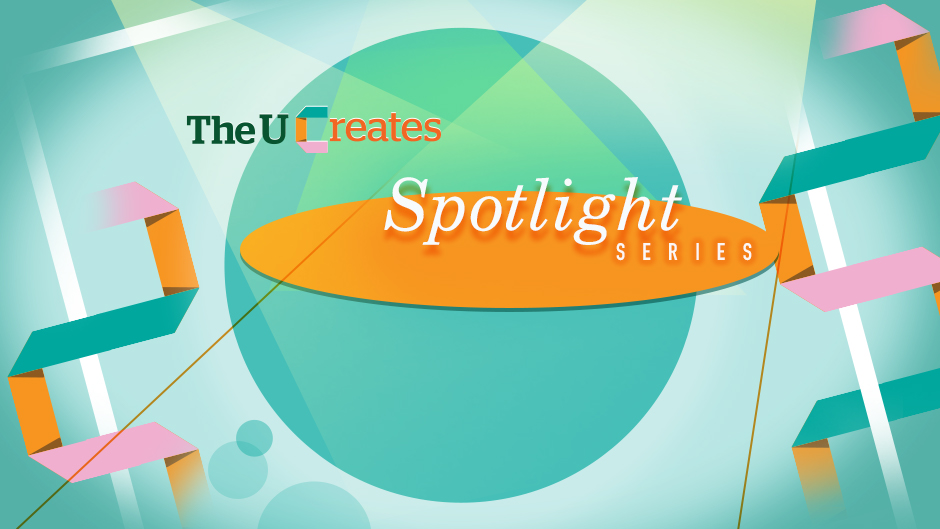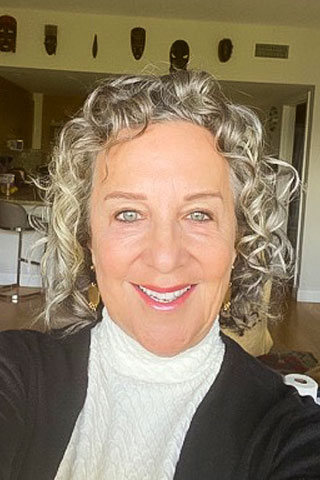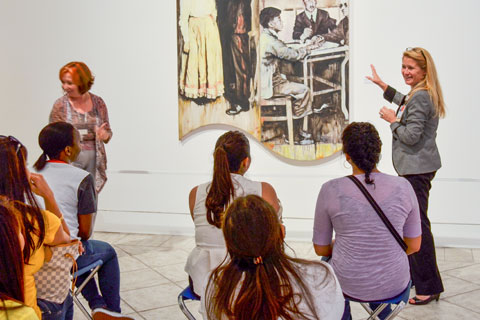Life experiences spark inspiration in museum educator
Amanda M. Perez, 11-03-2021

The U Creates continues a series focused on highlighting members of the University of Miami’s creative community.

In this Spotlight feature, meet Hope Torrents, a Lowe Art Museum educator and director of the Fine Art of Health Care program, created for students and professionals in medicine, nursing, physical therapy, and mental health. It aims to use art and discussion to fine tune observational, analytical, and communication skills, all of which are important in clinical settings.
Share your role in the Lowe Art Museum and what inspired you to begin the Fine Art of Health Care program.
My role has been as a museum educator. For the past 16 years, my title at the Lowe Art Museum has been school programs coordinator. I started the Fine Art of Health Care program in 2009. I had been trained in a museum guiding/teaching methodology called Visual Thinking Strategies. A colleague, Alexa Miller, co-founded a program at Harvard Medical School using this methodology and was instrumental in helping me start the Fine Art of Health Care. I am now the director of the Fine Art of Health Care program.
How have your personal experiences helped guide the way you navigate the program?
My husband was diagnosed with pancreatic cancer in 2010. He had five surgeries and was in and out of the hospital more than 40 times. I was his caregiver. As a complete neophyte to the world of health care, I became aware of how complicated it was. My husband was from Europe and had no idea how to navigate it all—finding surgeons, finding physicians, setting up appointments, insurance craziness, and the back and forth of understanding medical language and then translating it.
As I was starting the Fine Art of Health Care program, I became very aware of both the positives and negatives of our health care system. Communication is something we work on with students seeking degrees in health care. Communication is the number one cause of misdiagnosis and death, according to the World Health Organization. My husband had some wonderful physicians, and he also had some who either didn’t understand the importance of compassion or didn’t believe it was important to health and well-being.
Why do you believe art-based education is so important for people in the field of medicine?
After many years of attending workshops—at Columbia University, Harvard University, and the University of Florida—and presenting at conferences around the country, I became aware of a sea change in health care education. Biotechnology sort of usurped the importance of the humanities in teaching. Columbia University has an excellent Narrative Medicine program, University of Florida has a master’s-degree program in arts and medicine. The humanities have always been an integral part of health care education. We are now coming back to them. Across the country more and more humanities-based programs are being implemented into health care education.
What impact do you hope to make on the students who are participating in your program?

I’m hoping that our workshops help students realize the importance of self-care—coming to the Lowe Art Museum, getting out of their high-stress environments, slowing down, stepping back, and listening to their peers. Our workshops are inter-professional—nursing, medicine, physical therapy, psychology—in which students can witness how a group of people can look at the same works of art in the museum and have totally different perspectives. Art is open to multiple interpretations. Coming to a differential diagnosis or coming up with treatment plans for a patient may take different perspectives. Team-based medicine is out there. Patients are often working with not only different specialists but they are also working with nurses, physical therapists, social workers, etc.
And we’ve found that students get the importance of taking the time to listen to their colleagues and, more importantly, their patients. This is where the importance of communication comes in. A patient’s story is the “most important history,” Dr. Daniele Ofri writes in her book, “What Patients Say What Doctors Hear.” Over the years of doing many workshops with thousands of students, the majority of evaluative responses have to do with learning to respect others’ opinions and “active listening.” Our workshops are very interactive. Students learn in a very short period how to facilitate discussions about works of art and the participants make connections to patient care.
What goals do you have for the program?
Our goals include building the program and making it a requirement for medical students, residents, and fellows. It is now a requirement for students who are seeking doctorates in physical therapy and for some of the students in the School of Nursing and Health Studies. We would like to see the program expand and include drawing and writing activities.
The upcoming Fine Art of Health Care will take place Wednesday, Nov. 10 at 5 p.m.
Visit the Fine Art of Health Care website for more information.
To read past Spotlight stories, visit The U Creates Spotlight Series website.